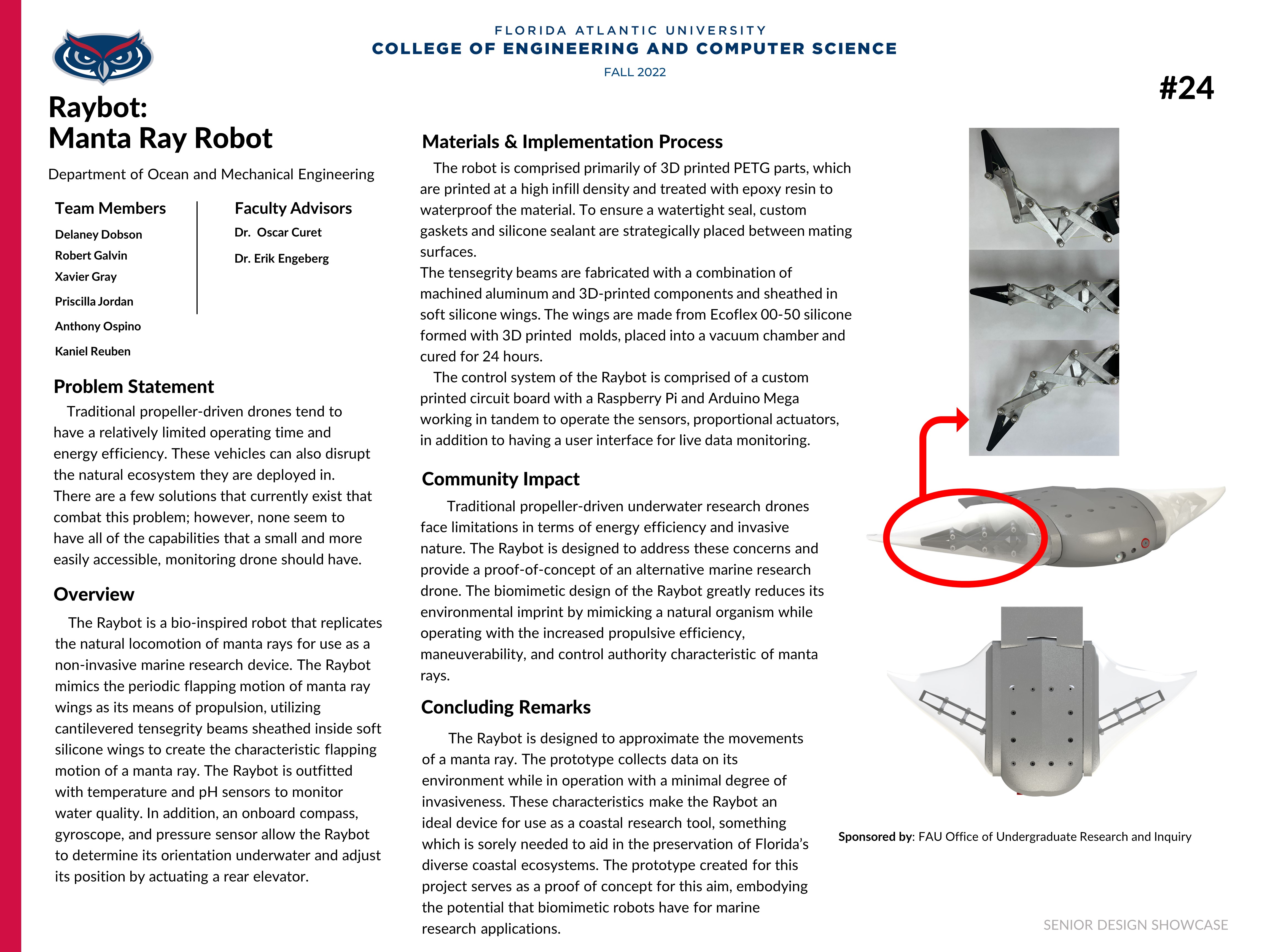Raybot
Overview
The Raybot is a robot that closely replicates the natural locomotion of manta rays for use as a non-invasive marine health research device. The robot is designed to mimic the periodic motion of manta ray wings as its means of propulsion, utilizing cantilevered tensegrity beams sheathed inside soft silicone wings to create the characteristic flapping motion of a manta ray. The robot is outfitted with temperature and pH sensors to monitor water quality. An onboard compass, gyroscope, and pressure sensor allow the robot to determine its orientation underwater and correct its angle of attack by actuating a rear elevator. The design includes three DC motors to drive the rear elevator and each tensegrity beam. The tensegrity beams are actuated with input from a tethered user-controlled remote.
Community Benefit
Traditional propeller-driven underwater research drones face limitations in terms of energy efficiency and invasive nature. The Raybot was designed to address these concerns and provide a proof-of-concept of an alternative marine research drone. The biomimetic design of the Raybot greatly reduces its environmental imprint by mimicking an organism that is part of the ecosystem and operates with increased propulsive efficiency, maneuverability, and control authority characteristic of manta rays.
Team Members
Sponsor
Office of Undergraduate Research and Inquiry, Prof. Oscar Curet
